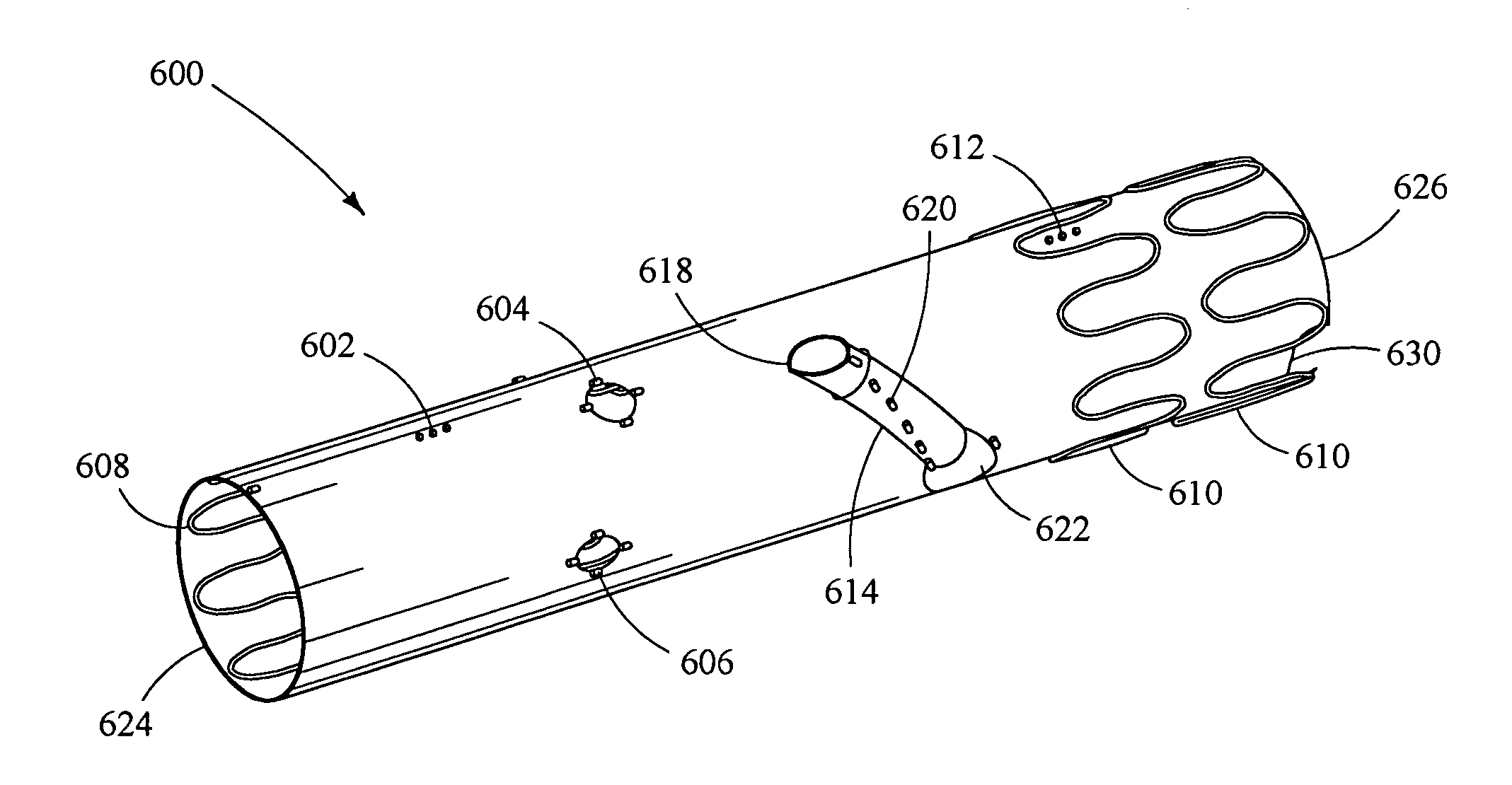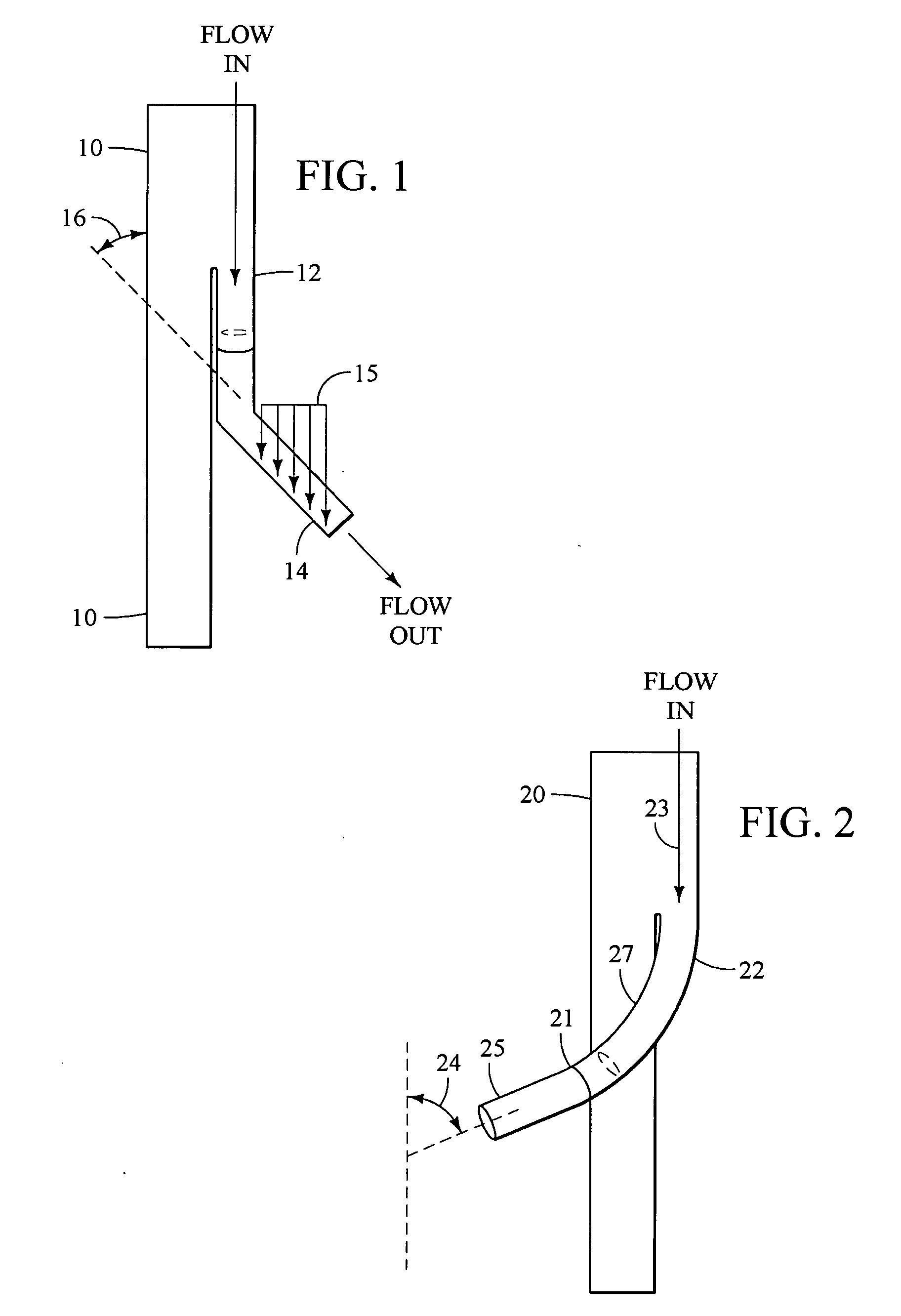Branched vessel endoluminal device with fenestration
a branching vessel and endoluminal technology, applied in the field of prostheses, can solve the problems of affecting the function of blood vessels and ducts, and sometimes weakening or even tearing, and affecting the flow of blood
- Summary
- Abstract
- Description
- Claims
- Application Information
AI Technical Summary
Benefits of technology
Problems solved by technology
Method used
Image
Examples
example 1
[0225] The flow force on the branched limb is dependent upon the loads applied to the branch point and ultimate angulation of the prosthetic branch. Of particular interest are the forces that may cause separation of the branch extension from the prosthetic branch. Forces due to flow in the y-direction, if significant enough, can become larger than the frictional forces that hold the branch extension and the prosthetic branch together, resulting in separation. If the separation is substantial, a type III endoleak will occur and the aneurysm will no longer be excluded.
[0226] The prostheses described above may be subjected to an in vitro leak pressure test. The purpose of this test procedure is to determine the minimum internal pressure required causing leakage at the mating point between two prostheses.
[0227] The test requires a pressure transducer, a pressure monitor, water / glycerin mixture (dyed) @ 3.64 cP, water bath, submersible heater, water pump, temperature controller, mating...
example 2
[0230] The prostheses described above may be subjected to an in vivo test, preferably in non-human mammals. One animal that is suitable for implantation of the prosthesis for testing and therapeutic purposes is the domestic cow. For testing purposes, six- to ten-week-old male calves were used.
[0231] As presurgical preparation, each animal was given a daily dose of 325 mg of aspirin beginning on the day prior to the procedure for the purpose of platelet inhibition. Each animal was kept without food for approximately 8-12 hours and without water for approximately 2 hours preceding each procedure. A pre-operative baseline ACT was measured in a Hemochron Jr. Signature Series Machine® (available from ITC in Edison, N.J.).
[0232] Each calf was sedated with Xylazine (1.0 mg / 10 lbs, IM). Once the animal was lightly sedated, an induction mask was used to deliver Isofluorane (2-4%). The calf's face was placed into the mask while the inhalation anaesthetic was delivered. The animal may be int...
example 3
[0240] One helical branch vessel stent graft is deployed such that the branch is properly oriented with respect to the internal iliac artery. Four markers on the distal end of the branch are placed approximately 5 mm above the internal iliac artery. The sheath housing the device is withdrawn to expose the branch limb, leaving the distal end constrained within the sheath in the external iliac artery. The wire dwelling within the contralateral limb is replaced with a steerable guidewire, which is then advanced into the distal aorta and snared with a snare device introduced from the contralateral femoral artery. This provides access from the contralateral groin, through the proximal aspect of the iliac branch, into the iliac limb, and then alongside the outer portion of the distal segment (external iliac artery segment) to the ipsilateral groin.
[0241] Over this through-and-through wire, a 10F or 12F Balkin sheath (Cook Incorporated, Bloomington, Ind.) is introduced and advanced into t...
PUM
 Login to View More
Login to View More Abstract
Description
Claims
Application Information
 Login to View More
Login to View More - R&D
- Intellectual Property
- Life Sciences
- Materials
- Tech Scout
- Unparalleled Data Quality
- Higher Quality Content
- 60% Fewer Hallucinations
Browse by: Latest US Patents, China's latest patents, Technical Efficacy Thesaurus, Application Domain, Technology Topic, Popular Technical Reports.
© 2025 PatSnap. All rights reserved.Legal|Privacy policy|Modern Slavery Act Transparency Statement|Sitemap|About US| Contact US: help@patsnap.com



